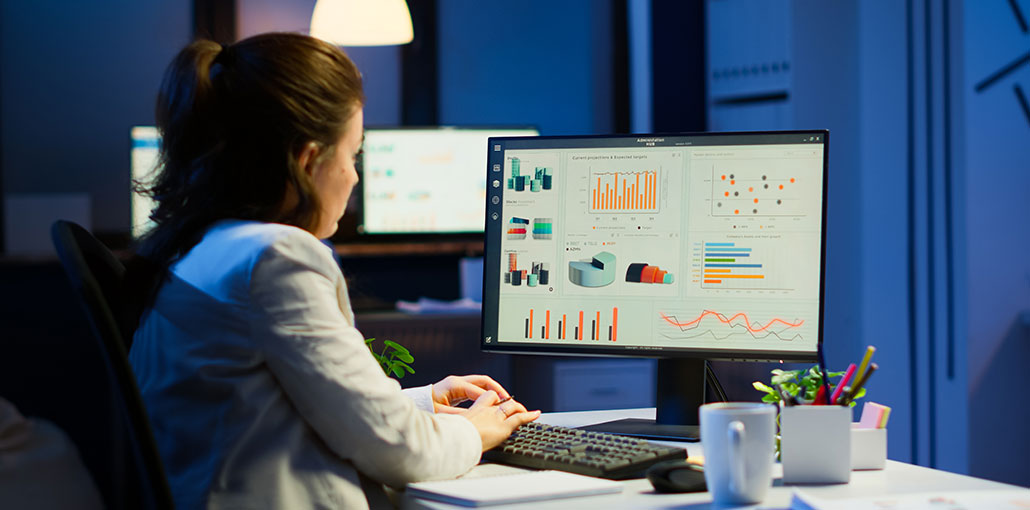Many office-based businesses already use some type of employee monitoring software. However, when the COVID-19 pandemic forced companies to create remote work plans, employee monitoring software soared. A recent survey by ExpressVPN found that 78% of respondents admitted to using employee-monitoring software.
Monitoring systems are legal, no matter if they were implemented to prevent employees from visiting harmful websites or track employee productivity. But just because you can legally monitor your employees does not mean that there won’t be opposition. Find out why employee monitoring software is important and the steps required to implement it effectively.
Strategically implementing employee monitoring software is a smart move
Employee monitoring systems can be used for many business purposes. It is important that employees are aware of your reasons. You might use it to monitor employees’ behavior toward clients. Or, you may want to avoid data leaks or mitigate cybersecurity risks. This makes employee monitoring systems more appropriate for companies working with clients and those who deal with sensitive data. If you don’t clearly state your purpose, employees may not be able to see it.
Employees may view monitoring software systems, such as their personal privacy invasions or tools that harm their well-being at work, as tools that can be used to harass them. Employees can feel unsafe if they know they are being monitored. This can affect their work culture, morale, and relationships with managers and employees. With the right attitude and some consultation with your employees, you can change workers’ minds.
Also read: Top 10 Employee Training Tracking Software
Best practices to implement employee monitoring software
After weighing the benefits and cons of employee monitoring software, and deciding it is the best choice for you, there are many highly rated employee tracking systems available. These best practices will help you choose the right system for your company.
1. Build a formal, written employee monitoring policy.
If you don’t have policies that outline how the system collects and monitors employees, your workforce could be hostile to it. A set of rules for responsible internet use, email to clients, and desktop apps is also a good idea.
While there is no federal law that mandates you to notify employees about company-owned devices being monitored, state laws regarding workplace privacy or employee monitoring differ. It is a good idea, therefore, to have a written policy.
Either you can create your own policy or work with your team to develop a shared one. It is a great way for everyone to sign an agreement and implement the policy.
2. Explain the laws around privacy expectations.
Explain to your employees the legal use and limitations of monitoring software in order to encourage their acceptance. It is not necessary to have access to all conversations. However, it is important to understand whether employees are using unrecognized flash memory or if they visit Facebook regularly.
Explain to your employees that while they are at work, their privacy is not absolute and that they must sacrifice some of it in order to make the company run at its best. Secure servers, such as those that use advanced encryption, are recommended to protect any information you collect. These secure servers can store private data collected through monitoring software.
3. Consult your workers.
Transparency is essential in any company, particularly when it comes to technology that has an impact on every employee at work. It is irresponsible to install an employee monitoring system without consulting your employees. This can have negative consequences. Discuss the topic with your entire workforce and hold a meeting in which HR representatives will explain the system.
Your employees should be fully informed about the platform as well as employee monitoring. Explain to your employees how the platform monitors them. What data it collects, how it can use it, its legality, morality, and what scenarios data can and cannot be used. Your employees should be aware that they have the right to appeal to their HR managers in cases they consider unfair or illegal. Your workforce will be more open and transparent about the installation and use of an employee monitoring system.
4. Monitor employees during designated hours.
It is a good rule to monitor users only during work hours. You can allow them to browse Instagram during their lunch break, or Netflix after work hours. Make sure they are not flagged.
Employee monitoring software lets users manually clock in and check out, allowing them to control when they are and are not being monitored. You can also program software to track specific times.
Also read: 13 Tools to Analysis Employee Performance
5. Avoid monitoring systems advertised as ‘spyware software’.
Some software options are more spyware-like than regular employee monitoring software. Some platforms are able to run in stealth mode, without workers’ knowledge, and can track employee activity down every keystroke.
You may need keystroke logging features. Make sure your team is clear about how you will monitor them. Clear communication is a great way to build trust and protect yourself from accidentally seeing sensitive information about employees, such as bank account details or health records.
6. Don’t install monitoring systems on employee-owned devices.
Install employee monitoring software only on company-owned devices. If you don’t have a company phone or laptop, but want to monitor employees, give them a device that is business-owned and inform them clearly that they are using monitoring software.










Leave a comment